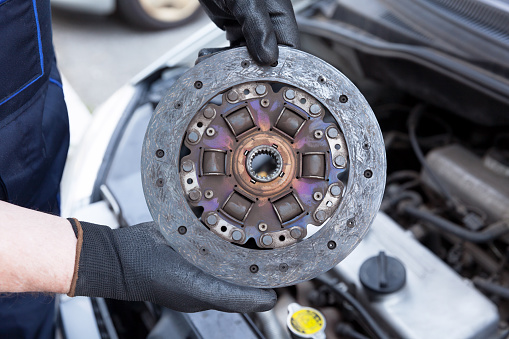At its core, a clutch acts as a connector between two rotating shafts, managing the power flow from the engine to the wheels. While manual cars come with a distinct clutch pedal, many remain unaware that automatic vehicles possess a clutch system too. Although automatics lack a pedal, they contain clutch mechanisms that function differently compared to their manual counterparts.
Automatic cars boast two primary clutch systems. The Automated Torque Converter (ATC) is a clutch system that waits until the wheel torque rises to a certain level, upon which the clutch activates, facilitating an automatic gear change.

In contrast, the dual-clutch system allocates a specific clutch for even and odd-numbered gears. Enhanced with electrohydraulic mechanisms, it offers one of the most seamless clutch experiences. Some modern vehicles also feature paddle shifters beside the steering wheel, permitting drivers to switch gears in a semi-automatic mode.
It’s crucial to understand that in manual cars, the term “clutch” does not merely refer to the pedal. This misunderstanding is akin to calling a light switch “the light”. While the pedal is the control tool, the actual mechanism resides inside.
Determinants of Clutch Longevity
The lifespan of a clutch varies and is influenced by numerous factors:
- Driving Expertise: Manual transmissions can be challenging. Incorrectly changing gears can reduce the clutch’s lifespan.
- Carrying Capacity: Towing heavy loads, such as trailers or caravans, can exert more pressure on the clutch.
- Clutch Fluid Levels: Keeping clutch fluid at optimal levels ensures its longevity.
- Vehicle Age: Just as with all components, the older the car, the faster the clutch may degrade.
- Driving Environment: Operating the vehicle in hotter environments might affect the clutch fluid, reducing its efficiency.
While the average lifespan of a clutch lies between 30,000 and 100,000 miles, external factors can extend or reduce this duration. Being attentive to symptoms and seeking professional advice is essential.
Recognizing a Worn-Out Clutch
Several signs can indicate a malfunctioning clutch:
- Spongy Pedal Feel: A soft or mushy feeling when pressing the clutch is a warning sign.
- Shifting Difficulties: If the gears don’t engage smoothly, the clutch might be at fault.
- Frequent Slipping: The transmission slipping out of gear unexpectedly is a clear indicator.
- Distinct Odor: A burning smell often signifies a problematic clutch.
- Unusual Noises: Abnormal sounds can be due to malfunctioning clutch components.
- Pedal Issues: A pedal that’s sticky or jammed requires attention.
Prolonging Clutch Lifespan
Proper maintenance and mindful driving can significantly extend the life of a clutch. It’s essential to service your vehicle regularly, avoid unnecessary clutch usage, and ensure smooth gear changes. Staying vigilant and being aware of the typical sounds and feel of your clutch can help detect problems early.
When faced with clutch issues, always opt for professional assistance. While repairs can sometimes resolve the problem, replacements might be necessary in extreme cases.
Conclusion
The clutch is an integral component of a vehicle, dictating its performance and driving experience. A well-maintained clutch not only ensures smooth driving but also enhances vehicle longevity. By understanding its mechanisms and attending to its needs promptly, you can ensure your clutch serves you efficiently for miles to come.

Editorial Staff
Our writers, editors, content managers, and SEO specialist. We all take part in crafting amazing articles. We spend hours ensuring that each article is based on facts, researched, and thorough. You'll never want to click the back button to look for more answers other than here!
